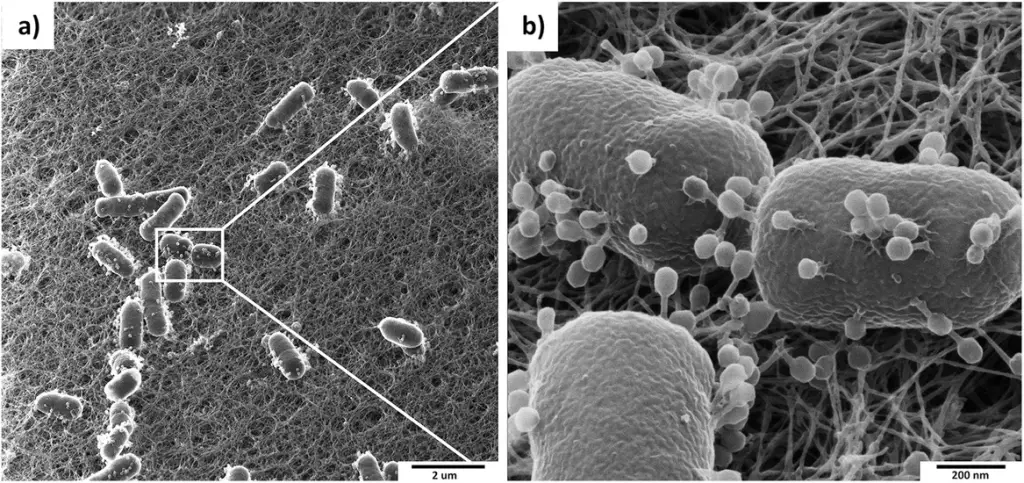In the world of microorganisms, where bacteria and viruses wage constant battles for survival, an unsung hero arises the virulent phage. While bacteria can cause numerous infectious diseases in humans, these tiny but mighty phages offer a fascinating solution by selectively targeting and destroying bacteria, thus holding immense potential for revolutionizing healthcare and providing alternative therapies. Unlike their counterparts, the lysogenic phages, which can integrate their genetic material into the host’s genome, virulent phages follow a different course of action, leading to the direct destruction of bacterial cells.
Understanding Virulent Phages:
Virulent phages, also known as virulent bacteriophages, are nature’s ultimate bacterial assassins. These tiny viruses have honed their skills over billions of years, co-evolving alongside bacteria to become highly efficient and specific killers. With their ability to recognize and infect particular types of bacteria, virulent phages act as precision-guided missiles, seeking out and destroying their bacterial targets with remarkable accuracy. They offer a promising alternative to traditional antibiotics, holding the potential to combat antibiotic resistance, treat chronic infections, and enhance food safety. The extraordinary power of virulent phages lies in their capacity to wage a relentless war against bacteria, making them an invaluable tool in the ongoing battle against infectious diseases.
The Life Cycle of Virulent Phages:
To appreciate how virulent phages function, let’s delve into their life cycle, which consists of the following major stages:
- Adsorption: Phages attach themselves to specific receptors on the bacterial cell surface, often using tail fibers or other appendages. This attachment is highly specific, allowing each phage to recognize and target particular bacteria.
- Penetration: Once attached, phages inject their genetic material into the bacterial cell, bypassing its defenses. The bacterial cell becomes a host to the phage’s reproductive machinery.
- Replication: The phage’s genetic material takes over the bacterial cell’s machinery, compelling it to produce new phages instead of its own components. The bacterium becomes a factory for phage replication.
- Lysis: As the newly formed phages mature within the bacterial cell, they cause the cell to burst open or lyse, releasing a multitude of phages into the surrounding environment. These phages can then continue the cycle by infecting other susceptible bacteria.

Photo credit to Wikimedia
Advantages of Virulent Phages
- Specificity: One of the remarkable aspects of virulent phages is their specificity in targeting particular bacteria. Each phage has a unique receptor recognition system, ensuring that it only infects bacteria possessing the corresponding receptors. This specificity allows for the precise targeting of harmful bacteria while leaving beneficial ones unharmed.
- Self-Amplification: Once a virulent phage infects a bacterium, it reproduces within the bacterial cell, resulting in the production of numerous progeny phages. This self-amplification capability means that even a small number of phages can rapidly multiply and overwhelm bacterial populations.
- Adaptability: Virulent phages have a remarkable ability to adapt and evolve alongside bacteria. Bacteria can develop resistance mechanisms against phages, but in response, phages can also evolve to overcome these defenses. This “arms race” between bacteria and phages has led to a constant dynamic equilibrium in natural ecosystems.
Applications in Healthcare:
The unique properties of virulent phages have captured the attention of scientists and researchers worldwide. They hold significant potential for addressing antibiotic resistance, biofilm-related infections, and numerous bacterial diseases. Here are a few notable examples:
- Wound Infections: Chronic wound infections caused by drug-resistant bacteria pose a major challenge. Phage therapy, the use of virulent phages to treat infections, has shown promising results in resolving such infections. Phages can target and kill the specific bacteria responsible, offering an alternative or adjunct therapy to antibiotics.
- Food Safety: Contamination of food products by pathogenic bacteria is a persistent concern. Virulent phages can be used as natural antimicrobials to control bacterial pathogens, reducing the risk of foodborne illnesses. They can be applied as sanitizers or additives to enhance food safety without the use of traditional chemicals.
By harnessing the power of virulent phages, scientists are unlocking new possibilities in the fight against bacterial infections. These tiny warriors from nature have the potential to pave the way for safer, more targeted treatments, helping us overcome the challenges posed by antibiotic resistance and improving healthcare outcomes for all.


